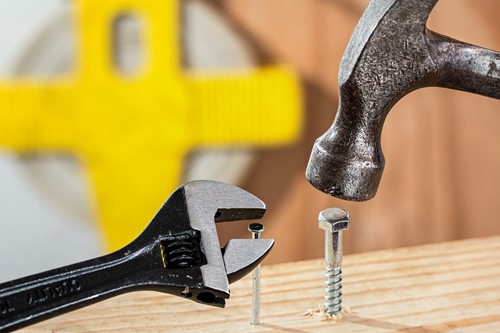
Purchasing a property with a blighted house on it may present a cost-effective opportunity. The presence of a faltering structure typically drives down the price tag. Once you buy the parcel and building, you must carefully consider whether razing or restoration makes the most sense. Rather than move forward with a predetermined idea about the next step, conducting due diligence that includes the following can help you make an informed decision.
What Is Your Long-Term Living Space Goal?
Before hiring a contractor to demolish the building or improve structural elements, take a moment to think about the future. Consider what you envisioned when you bought the property. Now that you are ready to move forward with construction, does that vision necessarily require starting from scratch? Ask yourself the following questions:
- Can the existing structural elements be enhanced to meet building codes?
- Could existing materials effectively be left in place?
- Is there an opportunity to re-purpose lumber and other materials?
- Local historical societies could object and force you to negotiate a challenging bureaucracy to secure demolition permits.
- Environmental groups and agencies sometimes require expensive safeguards to raze a structure near wetlands.
- Local zoning regulations may restrict new construction designs and sizes.
- Recently created flood zone mapping could require new construction builds to elevate houses on expensive pier foundations.
If your goal does not require a complete rebuild using modern materials, combining use of old and new elements could make more sense. Homes designed using vintage materials blended with today's innovative products often prove attractive to potential buyers.
Can Existing Structural Supports Meet Building Standards?
There are multiple ways of looking at keeping structural elements such as beams and foundations. However, the primary consideration involves safety. Older homes often included thick posts and beams that are far superior to today's commonly used materials. That means they will more than likely provide enhanced structural safety.
By that same token, termites, carpenter ants, dry rot and powder post beetle infestations may have reduced their structural integrity. Before a builder proceeds, it's critical to inspect the structure and determine the soundness and strength of these materials. If they meet or exceed today's stringent building codes, they can be a boon. Even if they require modest enhancements, existing structural supports can prove to be a cost-effective asset.
Determining the Costs
Using a calculator to add up the cost of razing permits, demolition and hauling away debris seems simpler than it is. You may discover unanticipated obstacles that ramp up your costs. These may include the following:
The key takeaway is that existing structural elements typically do not fall under these and other newly-minted regulations. Even reasonable structural upgrades may not necessarily satisfy the more stringent guidelines. New construction must always adhere to the current building codes, materials and zoning laws. Arriving at an accurate rebuild estimate requires substantial due diligence.
When deciding whether to upgrade structural elements and remodel or demolishing a structure, consider working with an experienced construction professional. Identifying the hidden costs can help you make an informed decision.
About the Author

Eric Lindlau
There are many qualities and skills that go into being an excellent real estate professional - integrity, in-depth community and market knowledge, marketing savvy, effective negotiation skills and a high-quality professional network, all of which are hallmarks of how I work.
